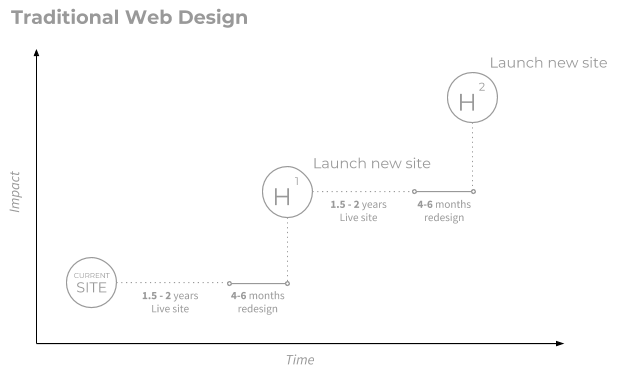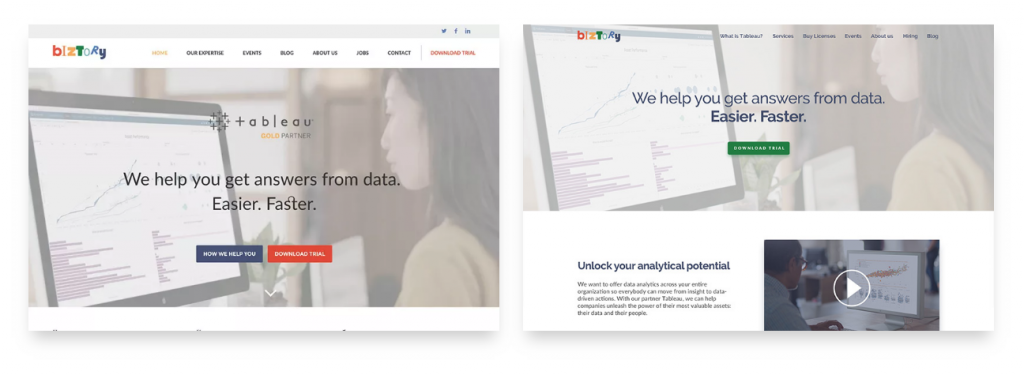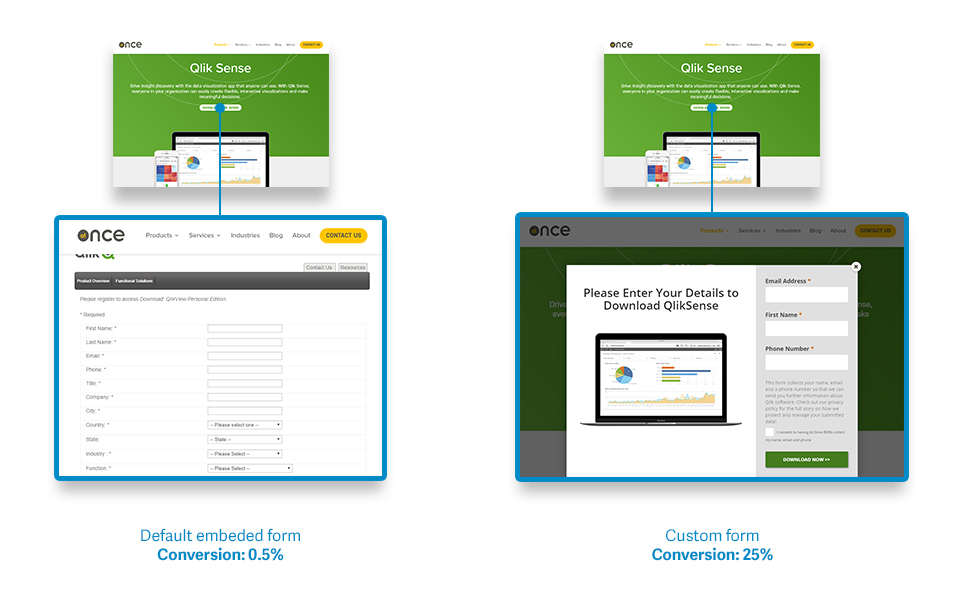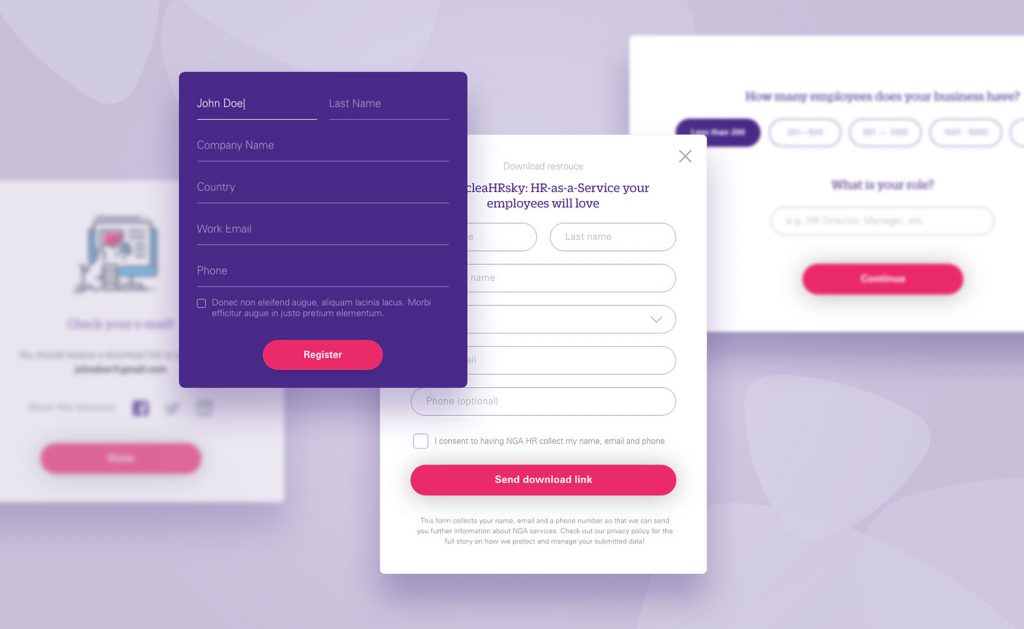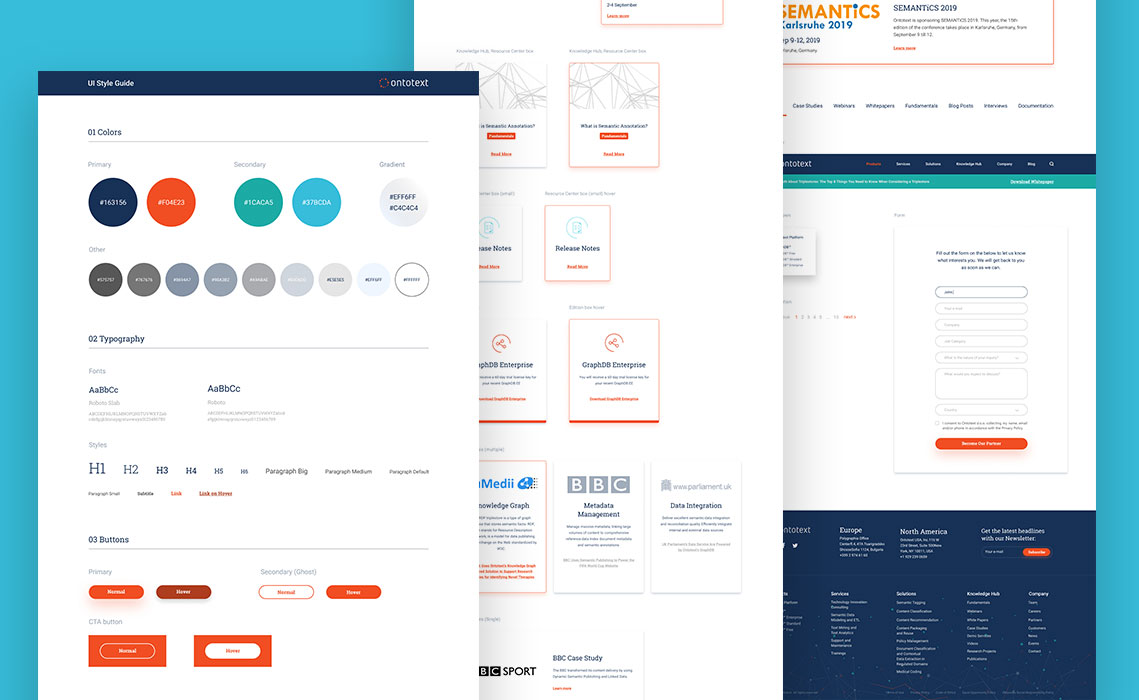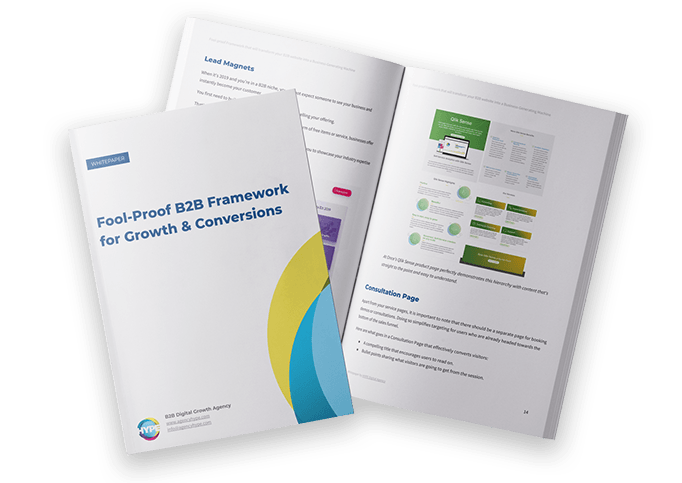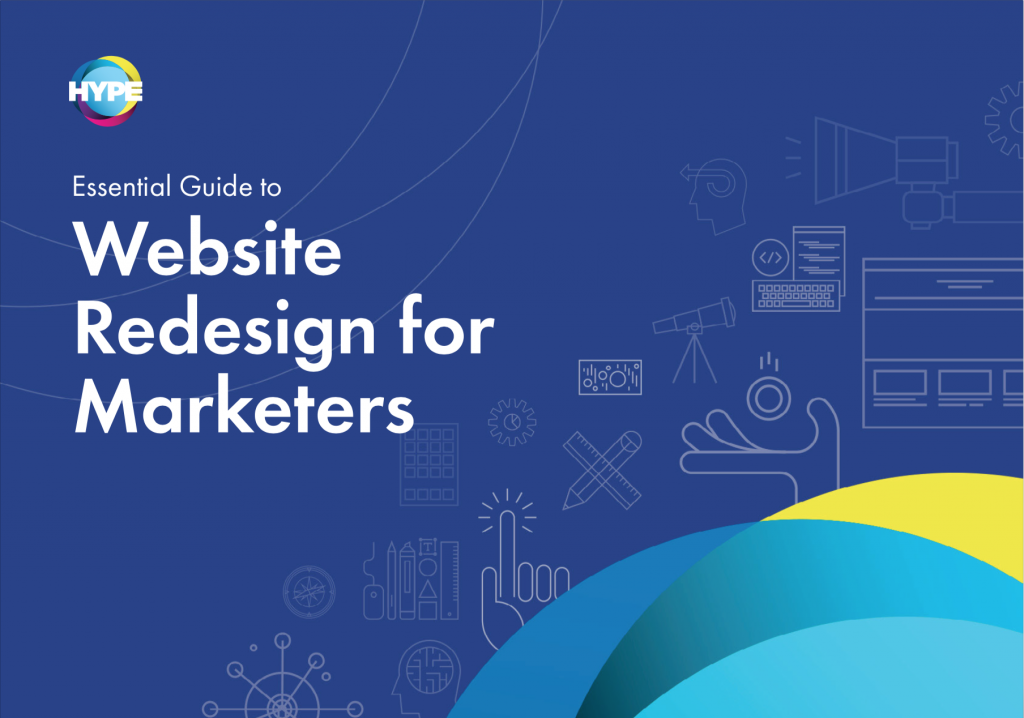If you were to make and sell chocolates, would you rather produce it all in one go, sell it, and not have surefire purchases? Or would you rather start small, keep experimenting on what better suits your consumers’ tastes, but be assured things get better with every move?
It’s exactly the same with creating a new website. You could either risk getting the website done the old fashioned way—do what you think would work and without the guarantee of getting yourself the results you hope to get out of it.
Or you could implement it slowly and in a smart way, measure its progress, and ultimately assure yourself that it’s really working for your business.
In this day and age, there’s really no point using old school techniques that will only waste your time and money.
Still not sure what we’re talking about?
Read this article and learn the about a new and cool methodology called Growth Driven Design that will help you quickly redesign your website and convert it into a strong asset for your organization, bringing you new business every month.
What is Traditional Design?
A decade ago, not all businesses had a website. An average consumer’s attention span was considerably higher compared to what we have now.
Smart devices, notifications, and other digital distractions barely existed, so it’s almost certain that users would take their time to check your site and what it has to offer. After all, what else was there to do on the internet back in the day?
Because the internet was a concept that was hard to explain to people, websites started out very simple. These sites were created via Traditional Design.
Being a widely used web design approach even to this day, some of you may find this process familiar—the agency gets the brief from the client, the agency creates the website, client approves it, and it goes live. That’s it.
Back in the day, websites created using the traditional approach were purely informational. Whether it’s purchasing an item on a website, or trying out a unique functionality, people didn’t have the confidence to take action on the web simply because they weren’t familiar with the entire idea of the internet just yet.
However, as consumer tastes and behaviors continue to evolve along with technology, more and more people rely on the internet for information, leisure, and virtually everything.
Nowadays, websites no longer need to be just informational. In fact, businesses need to create strategies to allude their customers to take action – it could be visiting a new blog post, downloading a white paper they’ve created, or even buying their product online.
That being said, it is a must to keep up with the changing times and make an effort to put your website in the spotlight. That way, you can better appeal to your target audience, get ahead of competition, and generate real results from your website.
If you don’t make any effort on your site, well, that’s basically saying, “Hey, I have a new and awesome product, but I won’t promote it because the customer will find out about it on their own.”
Newsflash: they won’t.
Traditional Design Sucks. Here’s Why.
Websites need to be marketed in order for people to discover them. And this can only be possible if you have a site that resonates with your audience – something that cannot be easily achieved by traditional web design, especially if you’re not keen on understanding your online visitors’ preferences. In fact, Adobe found that:
“38% of online users will stop engaging with a website if the content is unattractive in its layout or imagery.”
Without knowing what goes on inside your visitor’s heads and how they’re going to react to your website, your redesign team is left to assume what could appeal more to your visitors when they don’t have any data to back their decisions.
It’s basically a “make or break” interaction with your target audience once your site goes live.
Take Marks & Spencer for an example. In 2014, the retail brand decided their website needed a facelift and launched a new look. And while the people behind the project had a good feeling about it, its performance turned out to be a failure.
Without proper testing and consideration as to how their audience would feel about the new look and experience, they went on to release the new website. As a result, M&S saw an 8.1% drop in online sales on its first 6 months since its relaunch.
Given this example, I think we can both agree that the traditional design approach isn’t the best way to achieve positive results in the fastest way possible.
But more than just a guessing game, redesigning your website using the traditional approach could cost you more than you could hope for. That plus having to wait for at least 3 months to build your website from scratch and pulling out marketing staff in-between to write the website content.
Did we mention the time it takes for your staff to write the copy? With the huge possibility of late submissions, your web development process would most likely be delayed. Remember the Marks & Spencer example earlier? It took them 2 years to develop that website.
It doesn’t stop there. The most frustrating part for every business owner?
Money.
While your website is being developed, you could be losing potential customers who would have interacted better and converted faster through your new site. And considering the amount of time it takes for it to be fully launched, well, we could only imagine how much you could lose.
More importantly, it’s a huge risk to invest thousands of dollars on a website that does not guarantee results. The worst part? If your website ultimately does not bring in the positive outcome you had hoped for, there won’t be any chance for you to redo the project without cashing out thousands again.
To put it simply, the traditional design approach takes too much effort, all while requiring a huge amount of time and money. The good news? You can still produce a fully-functional website that drives results at a faster speed.
Why Growth-Driven Design is the superior, modern alternative.
Growth-Driven Design (often referred to as “GDD”) is a modern approach to web design aimed at optimizing the performance of your website through data gathered from your website’s users. It was created by HubSpot, the world leader in inbound marketing solutions.
By applying the GDD concept to your website creation process, you can get rid of uncertainties knowing that every action taken while building your website is measured and based on the goals you have established.
Eliminating some of the inefficiencies in the traditional design approach, GDD also reduces the time and cost needed to launch a new website.
How does Growth-Driven Design work?
How GDD works is pretty simple. Divided into two main phases, the first phase identifies your strategy, develops your wish list, and builds your initial launch pad. The second phase is a continuous process which happens after your initial launch pad is gone live.
Phase 1: Launchpad
The first stage captures all the necessary information about your business. In doing so, we are able to define the the scope of your project and the strategy which will be adapted by the team in developing the website.
The wish list allows you to enumerate the functionalities you would like to be implemented on your launch pad website.
And if you’re worried about figuring out which one you should add into the site, don’t fret. The goal of this stage is for you to come up with as many ideas as you can. In fact, a typical wish list includes at least 50-150+ ideas.
Once all the functionalities are listed, we can now select which among the items can drive the highest impact to your website.
You can start by applying the 80/20 rule. This means that out of all the items on the list you’ve created, 20% of these items will drive 80% of the impact on your website.
Once that is all set and done, put aside the rest of the list for later because we are now ready to develop and implement your initial launch pad. Your launch pad is basically your website composed of the top 20% features we mentioned earlier.
Phase 2: Continuous improvement
Once your website is live and kicking, it’s time to move onto the second phase which is a cycle of planning, development, learning, and transferring. The entire process revolves around the behavior of the users who visit your website.
Based on the data gathered from your launch pad’s visitors, we will look at the performance of each feature we’ve incorporated from the wish list.
Figuring out which ones are performing best and which ones aren’t brings us back to the wish list where we, once again, choose which among the remaining items can further drive impact to your website.
After selecting, we can implement them to the already-existing website and then measure like we did at the beginning of the second phase. The cycle goes on, boosting your website and bringing about the new features that work best with your audience.
The Benefits of Growth-Driven Design
GDD reduces the risk of project failure. Unlike the traditional web design, the GDD approach is based on the data gathered from its launch and the goals set upon strategizing. In doing so, it is designed to equate every action to value.
In fact, we’ve taken this approach with one of our clients — Biztory. In just 4 weeks from its launch, we saw a 394% increase in their conversion rate, and an 80% decrease in their cost per acquisition.
Biztory.com: Original website vs. Redesign with GDD
That’s definitely something the traditional web design approach can’t do. GDD allowed us to make informed decisions in a short period of time, and make continuous updates to Biztory’s website.
GDD drives continuous website improvement. GDD’s second phase allows businesses to constantly improve their launch pad by studying the personas that visit their website. It is through this method that they are able to understand what works and what doesn’t on their site.
This is what happened with a recent client of ours — At Once. When we started the process of redesigning their website, we first identified their key pages. In this case, that was the two product pages of the client.
Atonce.be: Improving the conversion with better forms
We launched the first versions (MVPs) asap and we started with the A/B testing right off the bat. During a period of 2 months, we tested various hypotheses and layouts. This resulted in a final version with 234% better conversion VS the control one, and almost 1000% more compared to the version before the redesign.
GDD allows your website to be in-sync with Marketing and Sales. Your website is your best source for leads. That being said, it’s only necessary that your designers are well aware of what’s suitable not only for your audience but for company’s needs as well.
By monitoring the data and understanding the behavior of your site visitors, your marketing and sales teams can work hand in hand with the design team to further optimize the website and produce quality leads that convert.
ngahr.com: Improving the all lead forms
We took this approach with our client — NGA. By setting up an effective lead form that primarily focuses on the main qualifications of their ideal target, their sales team was able to spend more time prioritizing qualified leads and less time with those who aren’t.
Not only that, the insights gathered from the website also allows the marketing team to develop campaigns and strategies which can appeal to their customers not just online but also offline.
GDD is flexible when it comes to trends. When it comes to keeping up with trends and technology, a growth driven web design approach is the way to go. When an update is in order, trends can easily be integrated so that your website is consistently fresh and captivating to your viewers.
Key Takeaways: Traditional Design vs Growth-Driven Design
While the traditional design has its own benefits such as having an opportunity to research and fully understand your audience even before developing the website, Growth-Driven Design is a more practical approach for dynamic businesses as it provides a more reliable process that measures data gathered from the visitors of your website themselves.
We’ve learned now that one of the key differences between Traditional Design and Growth-Driven Design is that the traditional approach only launches a website once everything is completed.
[cta_consultation title=”Let’s see if we are a good fit” description=”Schedule your 30-minutes consultation, so we can learn more about each other and determine if we are a good fit. No strings attached, just an honest chat to see if we can help.”]
In the GDD approach, however, a launchpad website is launched right away and is continuously improved over time. That way, you can be assured that each change made on your website are based on data and your goals so you’re closer to success.
If you ask us, it’s time people run away from a redesign that takes forever. If you’re looking to build a new website, we highly suggest creating it using the GDD approach which saves you time, money, and resources. In doing so, you’ll discover how a measured design process is more beneficial to your business.


